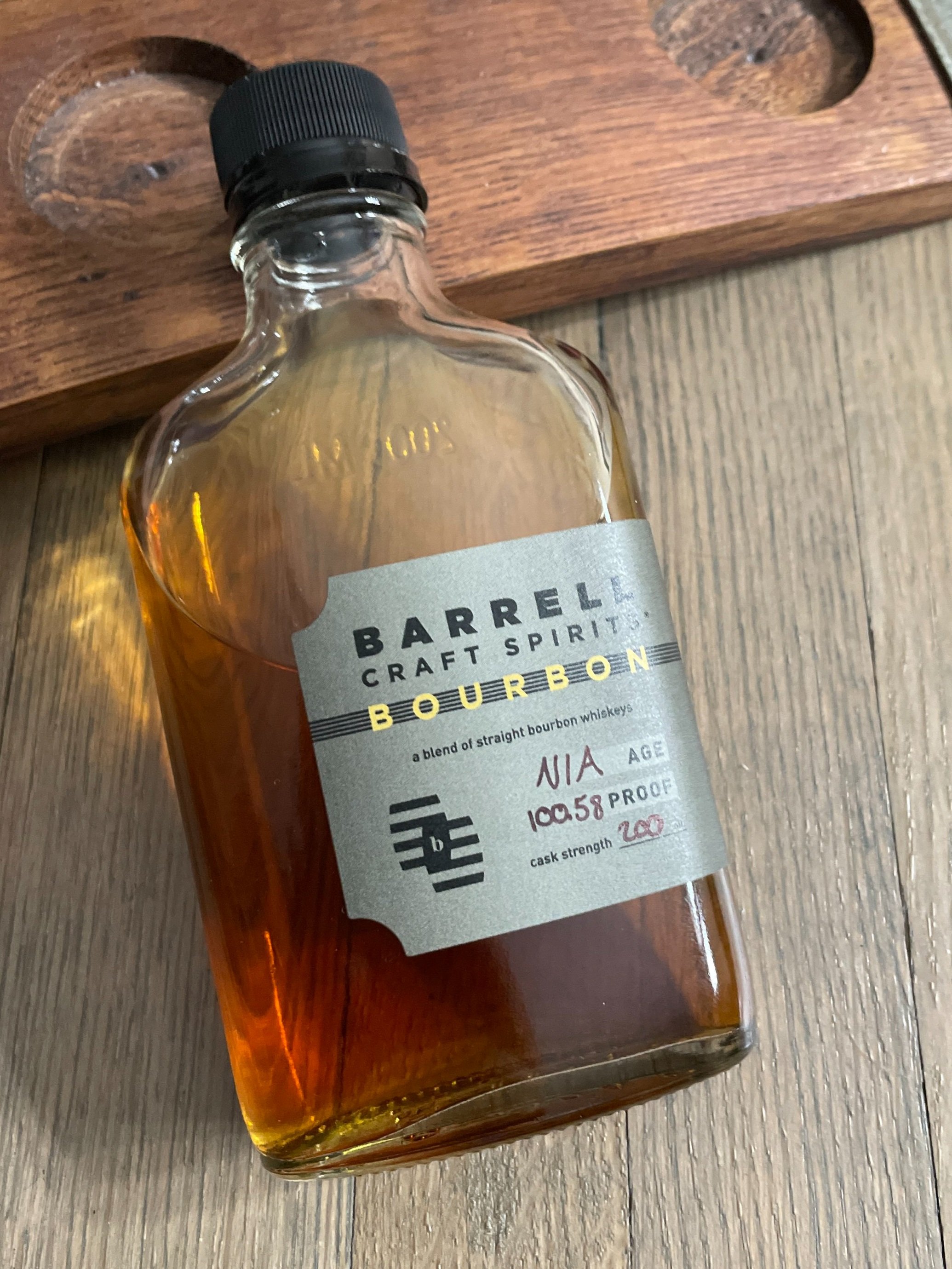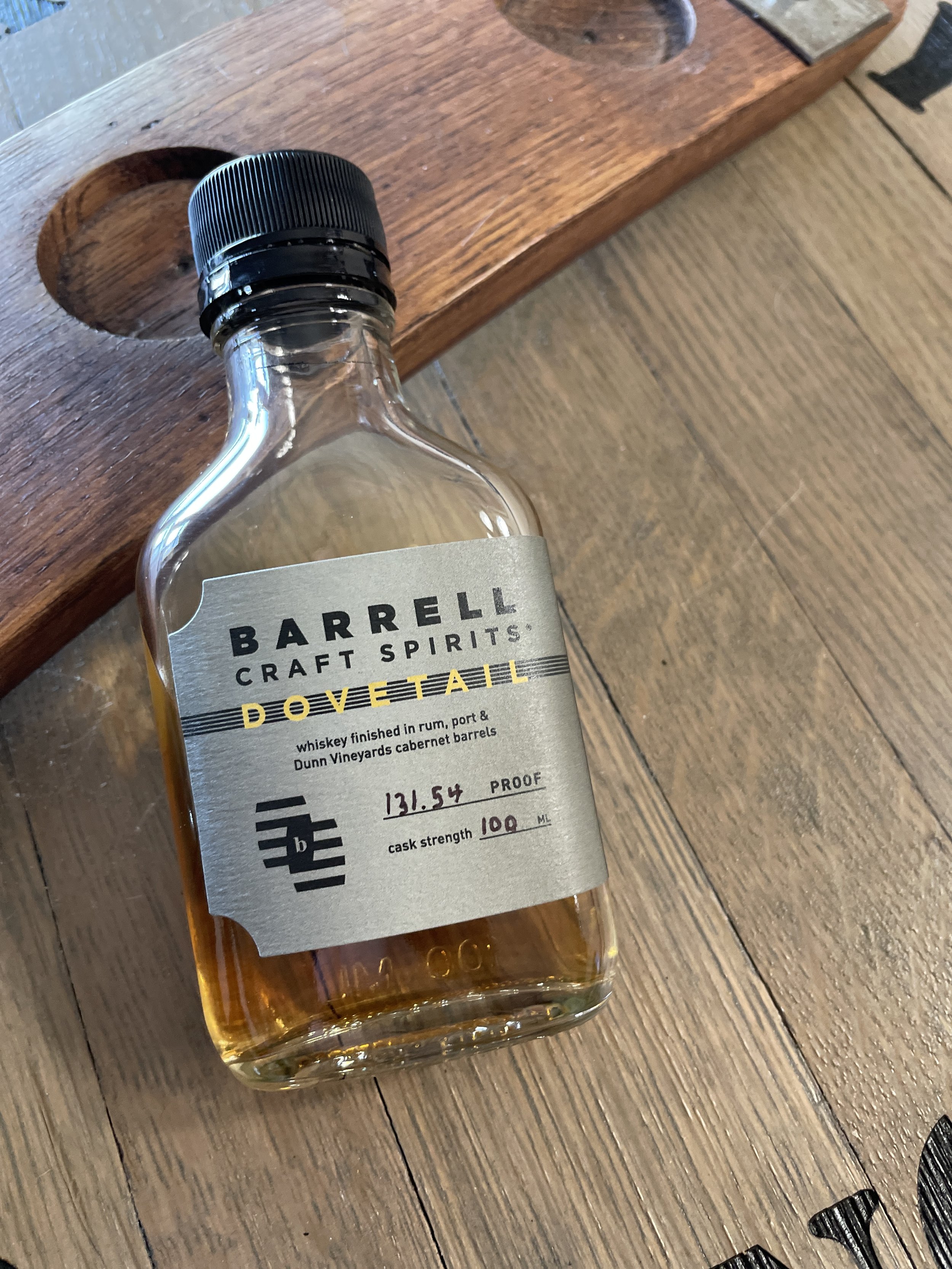Barrell Bourbon Gold Label
Barrell Gold Label Bourbon is Barrell creating a whole new category for itself. Before Gold Label, the most premium line Barrell produced was its Gray Label, under which multiple whiskey, rum, and bourbon lines had been released. Each was priced at $250, solidly in the limited edition price range for older products generally 15+ years old and at barrel proof. The Gold Label immediately doubled down on this, marking itself as an ultra-premium at $500 a pop.
Let’s get the big question out of the way: is this worth $500?
To be honest, maybe…and I lean more towards yes than no assuming money isn’t an object.
It’s damn good bourbon, a high-7 rating, with balanced, evolving flavors that develop from nose to finish. There are very few bourbons, from any state, that are 16-17 years old and at barrel strength (whatever that means to you). We know, as consumers, that there was a huge volume of 15-ish-year-old bourbon that came out of Kentucky in 2019-2020, toted and sold under myriad NDP labels.
This is just that little bit older, with that age of spirit from three separate states, divided into four batches based on flavor profiles with one batch - the “milk chocolate batch” - undergoing a secondary finishing in toasted barrels. The toasted barrels add another significant cost into the mix. As always, Barrell is putting its blending skill front and center for judgment, but finishing one component rather than all four either shows discretion or hesitancy, and I can’t tell which it is here. Cost-of-ingredients isn’t a quality marker, but a reality check on how things add up to the stated price. I don’t usually consider price in my reviews - and it certainly doesn’t influence final scores - but when a bottle is $500 MSRP, it warrants discussion. I can hardly be called an apologist for noting that the liquid in the bottle isn’t cheap.
Let’s digress for a moment: my friends over at The Bourbon Culture posit that this finished component started out as Cascade Hollow (i.e. Dickel) bourbon, with the finish meant to cover the minerality/vitamin flavor generally found with Cascade Hollow bourbons. Taking their (Bourbon Culture’s) assumptions at face value, I agree with the assertions that most consumers of Barrell products would prefer the Cascade Hollow notes to be subsumed into the whole rather than the star of the show. I don’t necessarily agree with their thoughts that the overall price tag is a snub to everyday Barrell consumers - yes, most releases are $80-$100, with the Gray Label the previous premium at $250, but for as many Barrell products there are out there (including single barrels and other one-offs) there is an equal-or-greater number of consumers ready to drink them.
Ultimately, if someone is that much of a Barrell fan that they’ll buy anything they produce, price won’t be the deciding factor any more than it is for those who love Stagg soon-to-be-not-Jr. or Four Roses Small Batch Limited Edition but can only get it on secondary markets or at secondary prices.
The bones of this blend - Kentucky, Indiana, and Tennessee bourbons at between 110-115 proof - are the same as the majority of Barrell Bourbon batches, with the main differences being the ages (most Barrell Bourbon batches are a blend of between 5-15 year old bourbons, give or take a year on either end) and the batched nature, with only one component being finished. The disparate finishing practice is more common with their non-bourbon releases, such as Seagrass, Armida, etc. where the components are each finished in a separate way, then blended. From this viewpoint, the argument is thus whether a higher age statement and a quarter-toasted finish justifies a 500% price jump.
For my part, I do appreciate that the Cascade Hollow notes I don’t like are fully covered up, while recognizing that an older bourbon from Dickel will still provide a solid backbone of corn, oak, and spice to complement the Kentucky and Indiana bourbons in the blend. I’ve been quite clear in any review of a blend in which Cascade Hollow is included that I do not enjoy the flavor profile (I don’t hold anything against those who do like the flavor, it’s just not my thing). Reviewers and consumers must, of course, compare this release to other Barrell Bourbon batches; I say confidently that I am far more likely to buy a bottle of this than a bottle of another batch where the Tennessee bourbon was too strong, including consideration of price.
So, with all that being said…yes, $500 is a lot for a bottle. At about $20/oz, it’s up there with most of the limited releases you’ll see in a year that are above the regular-release line but below the BTAC/Pappy level, with the latter approaching $35-$75 an ounce at most bars and restaurants nearby. If money is a serious consideration, this is likely a no, a bottle you might try at a specialty bar but wouldn’t buy for your home. I have no doubt this won’t be the last Gold Label release, and perhaps future releases will more definitively warrant the price tag. For now, I’m still a maybe - leaning towards worth the price, but not 100% there yet.
Thank you to Barrell Craft Spirits and Ro-Bro Marketing for providing a sample of this whiskey with no conditions.
Barrell Bourbon Gold Label Whiskey: Specs
Classification: Blend of Straight Bourbon Whiskies
Origin: Undisclosed (Almost Surely MGP, Cascade Hollow, and best guess Barton for Kentucky)
Mashbill: Undisclosed
Proof: 113.54 (56.77% ABV)
Age: 16 Years Old (Contains 16- and 17-Year Old Bourbons)
Location: Kentucky, Indiana, and Tennessee
Barrell Bourbon Gold Label Whiskey Price: $499.99
Barrell Bourbon Gold Label Whiskey Review: Tasting Notes
Eye: Perfect golden amber. Syrupy rims and small splotchy drops.
Nose: Warm and bready (not yeasty - bready in a good way), some proof up front. Tight nose at first, with bits of orchard wood opening up. Marmalade on toast or an orange-scented morning bun. After some time - give it 5-10 minutes - vanilla pastry grows beautifully.
Palate: Ooh - that’s a delicious first hit. Caramelized red fruit, oak rolling into the back palate, effervescent citrus, bright vanilla. Solid proof opens up bakery goods. Mouthfeel is deceptively full, velvety, peppery, oak coating the tongue like primer for the flavor profile. Expressed orange peel over a maple old fashioned, rich caramel-to-toffee without being too sweet.
Finish: Medium-length, milk chocolate and almonds open under the orange zest and pith. Remains both coating and effervescent at once.
Overall: Keeps evolving - the mouthfeel is both coating and effervescent, giving a feeling that keeps you intrigued throughout. A healthy oak backbone never lets the flavor die off. Takes a few seconds longer than I’d like for the nose to open up, but once it does it’s a hell of a reward. Full-throttle from start to finish.
Final Rating: 7.8
10 | Insurpassable | Nothing Else Comes Close (Elijah Craig Barrel Proof Old Label Batch 4 or 2, Blanton’s Straight from the Barrel)
9 | Incredible | Extraordinary (GTS, Elijah Craig Barrel Proof B518 and B520)
8 | Excellent | Exceptional (Stagg Jr. Batch 10, Highland Park Single Barrels)
7 | Great | Well above average (Blanton’s Original, Old Weller Antique, Booker’s)
6 | Very Good | Better than average (Four Roses Small Batch Select, Knob Creek 14+ YO Picks)
5 | Good | Good, solid, ordinary (Elijah Craig Small Batch, Buffalo Trace, Old Grand-Dad Bottled-in-Bond)
4 | Has promise but needs work
1-3 | Let’s have a conversation









